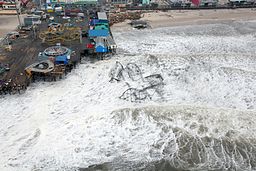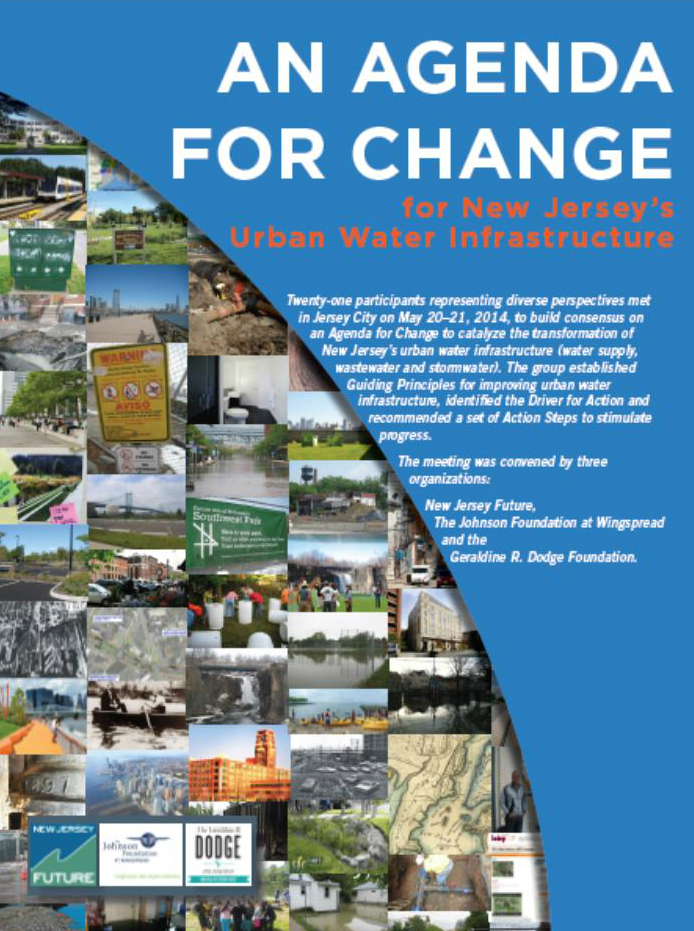New Jersey Future Blog
The Jersey Shore: How To Protect a Treasured Asset?
November 2nd, 2012 by Peter Kasabach
New Jersey Future staff and board continue to be concerned with the devastating effects from Hurricane Sandy throughout New Jersey’s communities. We are grateful for the coordinated response from elected officials, the service of our first responders and the proactive communications from our utility companies as they work through the emergency and subsequent clean-up efforts.
As the recovery proceeds, we know we also need to start thinking about the future.
How To Protect a Treasured Asset?

A damaged Casino Pier in Seaside Heights. Photo by Master Sgt. Mark C. Olsen/U.S. Air Force/New Jersey National Guard (Flickr) via Wikimedia Commons
- New Jersey has 127 miles of coastline along the Atlantic Ocean. Sixty-two percent of the state’s $38 billion tourism dollars (or $24 billion) in 2008 were spent at the Jersey Shore, supported by hundreds of sandy beaches with clean, swimmable waters.
- New Jersey’s fisheries and shellfisheries generated $168 million in revenue and employed over 40,000 people in 2008 alone.
- Vulnerability to coastal flooding relates directly to the distance of a home from sea-level. In New Jersey, 235,000 people live less than five feet above the local high tide line. Cities along the Jersey Shore with the largest total exposed populations, ranked most to least, are Atlantic City, Toms River, Ventnor City, Keansburg (on Raritan Bay) and Brigantine.
- The 120 municipalities that are subject to the Coastal Area Facilities Review Act (CAFRA) account for one-sixth (16.8 percent) of New Jersey’s year-round total 2010 Census population. Thanks to their seasonal nature, these municipalities account for one-fifth (20.4 percent) of the housing units in the state. And the coastal municipalities as a group have been growing faster than the rest of the state: Their population increased by 6.0 percent between 2000 and 2010, compared to 4.2 percent for the rest of the state.
Planning For Our Future
The question of where and how to rebuild along the New Jersey shore after Hurricane Sandy is a complex and nuanced one, involving property values, lifestyles, employment opportunities and significant tourism revenues, weighed against the risk and costs of similar severe weather events in the future. In addition, shore development is governed by a dense network of plans and regulations: municipal zoning and master plans; the state’s environmental regulations, including those dedicated to guiding coastal development; and the ways in which we’ve directed investments in water, transportation and power infrastructure.
The devastation caused by Hurricane Sandy is now forcing an important conversation among stakeholders involved in every aspect of development along the Jersey Shore, about how to focus our shared efforts on rebuilding the Shore in a more resilient, sustainable way, so that it can support the lifestyle, livelihoods and recreation opportunities that have made the area such a valued part of New Jersey.
Challenging the Status Quo and Answering Important Questions
How have government programs led us to develop the Shore in a way that has made it vulnerable to severe weather events? Can programs such as federally subsidized flood insurance programs and beach replenishment be changed to ensure that they act to protect our shore areas?
How can we gather and learn from best practices implemented in coastal communities both around the country and around the world, and how can we work together to apply the most appropriate measures along various parts of New Jersey’s Shore?
Are there some areas where the vulnerability to weather is simply too great, and hence where development should be discouraged? If so, how can we make financial provision to protect those areas and those who own property there?
For lower-risk areas, what policies for retrofitting development will reduce vulnerability? With that goal in mind, how can we best direct development and investment in areas that are less susceptible to weather events?
How can we restore and preserve natural lands such as sand dunes, wetlands and floodplains, which help absorb storm waters and support healthy ecosystems?
How can we integrate storm vulnerability analysis into the State Strategic Plan, to ensure that state incentives for development are not targeted to high-risk areas?
How can the DEP update its Coastal Permit Program and Coastal Zone Management rules so that they reflect the new reality of more frequent severe weather, by promoting stronger, more resilient communities and a healthier environment? How can those regulations strengthen the region as a whole?
Our vision is that, by addressing these and other important questions, we can work together to develop a robust set of well aligned plans and guidelines that will enable the Shore to rebuild better than ever – stronger, more resilient to severe weather, more economically vibrant, more welcoming to all who wish to enjoy it.
















I would be willing to help with this stuff if there’s a place there. I was once Director of Coastal Resource Planning at NJDEP. Let me know. MAB